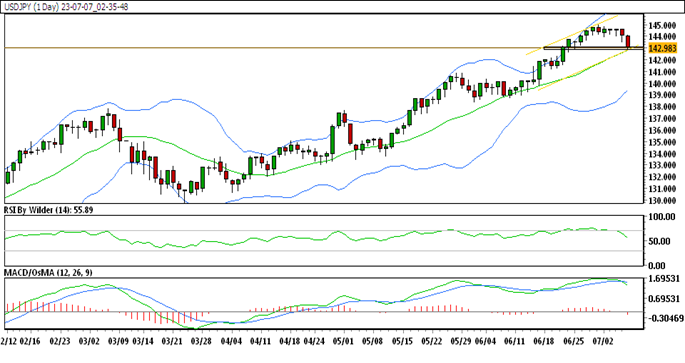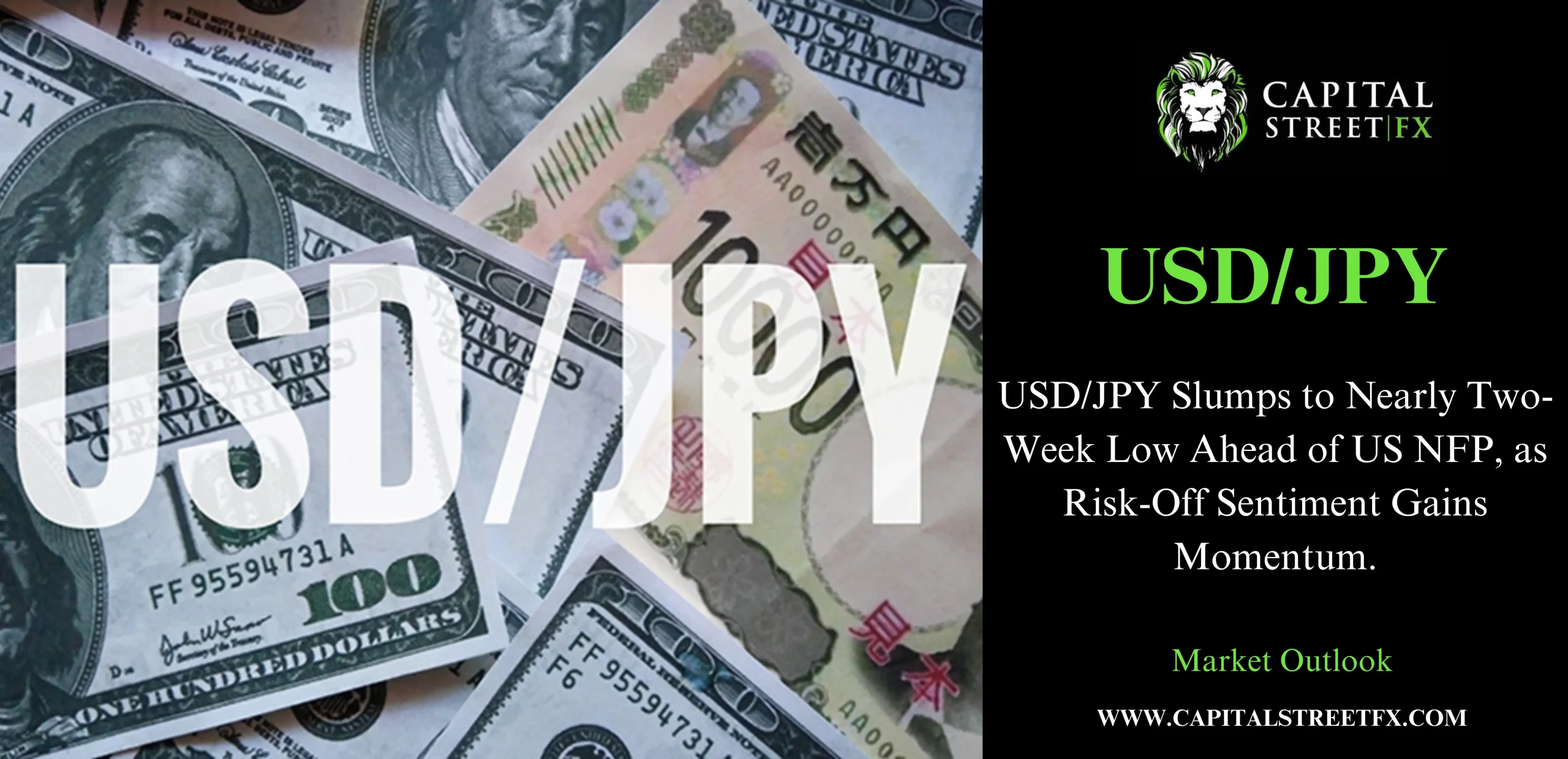USD/JPY Slumps to Nearly Two-Week Low Ahead of US NFP, as Risk-Off Sentiment Gains Momentum.
Fundamental Overview
The USD/JPY pair continues its downward trajectory for the second consecutive day, hitting a low that has not been seen in almost two weeks on Friday.
The prevailing risk-off sentiment, coupled with concerns about potential intervention by Japanese authorities to strengthen the domestic currency, is driving demand for the safe-haven Japanese Yen (JPY) and exerting significant pressure on the USD.
Amidst the rapid surge in borrowing costs, investors are apprehensive about the economic challenges ahead. Furthermore, escalating trade disputes between the world’s two largest economies, the United States and China are dampening risk appetite across the globe. These factors contribute to the bearish sentiment surrounding the USD/JPY pair, alongside the relatively muted price movement of the US Dollar (USD).
The recent release of data on Thursday revealed that the Prices Paid sub-component of the US ISM Services PMI dropped to a more than two-year low, suggesting a gradual moderation of inflation. This defensive stance by the USD bulls fuels speculation that the Federal Reserve (Fed) may adopt a less aggressive approach in the near future. Nevertheless, market expectations have already priced in a 25-basis-point interest rate hike at the upcoming July FOMC meeting. Moreover, the Fed had indicated in June that interest rates might need to rise by up to 50 basis points by year-end.
Driven by the hawkish outlook, the two-year US government bond yield, which is typically sensitive to interest rate forecasts, has reached its highest level since June 2007. Additionally, the benchmark 10-year US Treasury yield remains stable at around 4.0%, further supporting the US dollar. As a result, the widening US-Japan interest rate disparity, combined with the likelihood of the Bank of Japan (BoJ) maintaining its negative interest-rate policy until at least next year, increases the potential for dip-buying opportunities in the USD/JPY pair.
USD/JPY Technical Analysis – Daily Chart

Technical Overview
- USD/JPY is currently trading within an upward channel.
- The pair is positioned below the 5&20 Simple Moving Averages (SMA).
- The Relative Strength Index (RSI) indicates bullishness, while the Stochastic oscillator suggests a downtrend.
- Resistance level: 143.520
- Immediate support level: 143.094
How to Trade USD/JPY
After a significant surge, the USD/JPY price encountered resistance and stalled. Presently, the price has reversed and is trading near a critical support level. A breach of this level could potentially lead to further decline.
Trade Suggestion
- Sell at 143.08
- Take Profit at 142.31
- Stop Loss at 143.73
Conclusion
As the US nonfarm payrolls (NFP) report looms ahead, the USD/JPY pair continues to face downward pressure, reaching a nearly two-week low. Risk-off sentiment and intervention concerns contribute to the Yen’s strength, while the USD’s limited movement exacerbates the bearish outlook. However, the divergence in Fed-BoJ policies might offer some support and potentially prevent further losses. Traders should closely monitor the technical indicators and market developments to navigate the USD/JPY landscape effectively.
Frequently Asked Questions (FAQs)
1. What is driving the decline in USD/JPY?
- The decline in USD/JPY is primarily driven by the risk-off sentiment and concerns about possible intervention by Japanese authorities to strengthen the Yen. Additionally, economic challenges due to rising borrowing costs and escalating trade disputes between the US and China are contributing factors.
2. How do the Prices Pay sub-component of the US ISM Services PMI impact USD/JPY?
- The Prices Paid sub-component dropping to a two-year low suggests a moderation of inflation, which puts USD bulls on the defensive. This, in turn, leads to speculation that the Federal Reserve may adopt a less aggressive approach, affecting the sentiment surrounding USD/JPY.
3. What factors support the US dollar and widen the US-Japan rate disparity?
- The US dollar is supported by the relatively stable benchmark 10-year US Treasury yield, which remains at around 4.0%. Furthermore, the hawkish outlook has driven the two-year US government bond yield to its highest level since June 2007. This, combined with the expectation that the Bank of Japan will maintain its negative interest-rate policy, contributes to the widening interest-rate disparity.
4. What technical indicators should traders consider for USD/JPY?
- Traders should pay attention to the upward channel in which USD/JPY is currently trading. The pair is positioned below the 5&20 Simple Moving Averages (SMA). The Relative Strength Index (RSI) indicates bullishness, while the Stochastic oscillator suggests a downtrend.
5. What is the suggested trade strategy for USD/JPY?
- Based on the current market conditions, a potential trade suggestion is to sell at 143.08, with a take profit level at 142.31 and a stop loss at 143.73.
6. How does risk-off sentiment impact USD/JPY?
- Risk-off sentiment increases demand for safe-haven currencies like the Japanese Yen (JPY). As a result, USD/JPY experienced selling pressure, leading to a decline in the pair’s value.

